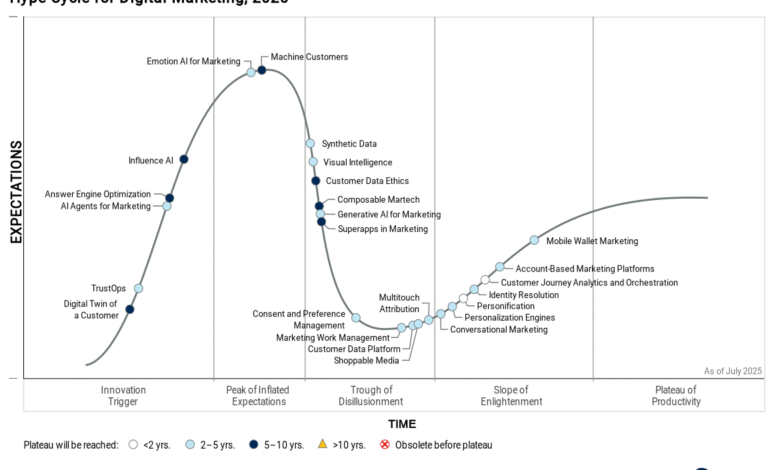Digital Marketing Trends 2025-2026: What’s Next?

▼ Summary
– AI for marketing will dominate 2026 trends, particularly through AI agents, generative AI, and Answer Engine Optimization for visibility in AI tools.
– Generative AI is entering a phase of disillusionment as marketers recognize its limitations for creating engaging, non-generic content.
– Key AI use cases in marketing include content generation, customer service agents, strategy planning, data analysis, and workflow automation.
– Strategic marketing trends emphasize AI-powered planning, privacy-first data approaches, and integrating physical and digital experiences.
– The RACE framework structures practical marketing tactics across customer lifecycle stages, balancing AI-driven efficiency with authentic human interactions.
Looking ahead to 2025 and 2026, digital marketing continues to evolve at a rapid pace, driven largely by advancements in artificial intelligence and shifting consumer expectations. Marketers must balance the efficiency of automation with the growing demand for authentic, human-centered interactions. This analysis explores the most impactful trends across the customer lifecycle, offering practical insights for both B2B and B2C strategies.
Strategic planning remains the cornerstone of effective marketing, with a strong emphasis on integrating AI into core business functions. The latest Gartner Hype Cycle highlights the dominance of AI-related technologies, pointing to several key developments. AI agents for marketing have emerged as a significant trend, moving beyond basic chatbots to offer sophisticated, sector-specific assistance. These tools can handle top-of-funnel interactions and seamlessly transition users to human representatives when needed.
Another major shift involves Answer Engine Optimization, which focuses on gaining visibility within generative AI platforms like ChatGPT and Gemini. This complements traditional SEO but requires a different approach to content structuring. At the same time, marketers are recognizing the limitations of generative AI for creating engaging content. Many brands have experienced a backlash against generic “AI-slop” and are now investing more in authentic copy and videos created by micro-influencers and employees.
Larger organizations are exploring Digital Twins of a Customer, though widespread adoption remains several years away. Privacy and consent management also continue to be critical concerns, especially as third-party cookies become less reliable.
When it comes to practical applications, AI serves five primary functions in marketing: content generation, customer service automation, strategic planning, data analysis, and workflow automation. Each of these areas offers opportunities for efficiency but requires careful oversight to maintain brand trust and engagement.
In the Reach phase, conversational search and AI assistants are redefining how users discover products and information. Marketers must optimize for natural language queries while maintaining established SEO best practices. Interactive and shoppable videos are becoming standard, particularly on platforms like TikTok and Instagram, where users expect seamless purchasing options.
The Act stage emphasizes engagement through gamification, augmented reality, and hyper-personalization. Brands that create immersive, tailored experiences tend to see higher interaction rates. Employee advocacy programs also play a crucial role in building authenticity and trust.
Conversion strategies in 2026 focus heavily on reducing friction. Frictionless checkout processes, social commerce integrations, and AI-powered conversational assistants help streamline the path to purchase. Trust signals, such as customer reviews and clear AI disclosure tags, are essential for overcoming consumer skepticism.
Finally, the Engage phase highlights the importance of long-term loyalty. Community-led growth, tiered membership models, and sustainability storytelling help brands foster deeper connections with their audiences. AI-powered nurturing campaigns can personalize post-purchase communication and reduce churn.
While AI dominates many of these trends, the human element remains irreplaceable. Successful marketers will blend data-driven insights with genuine, human-centered interactions. The RACE Framework provides a stable structure for navigating these changes, emphasizing tested principles alongside emerging opportunities.
(Source: Smart Insights)





